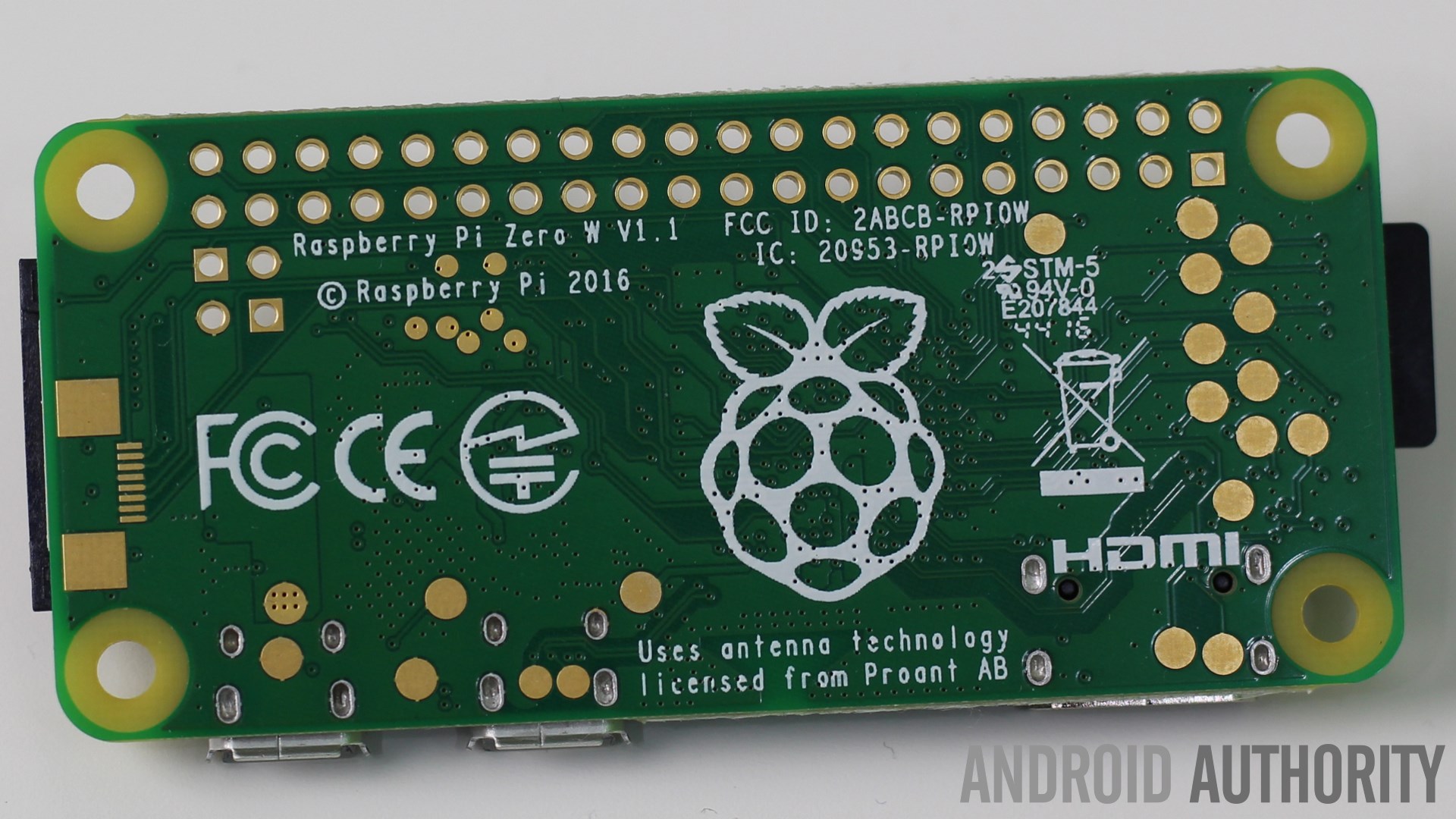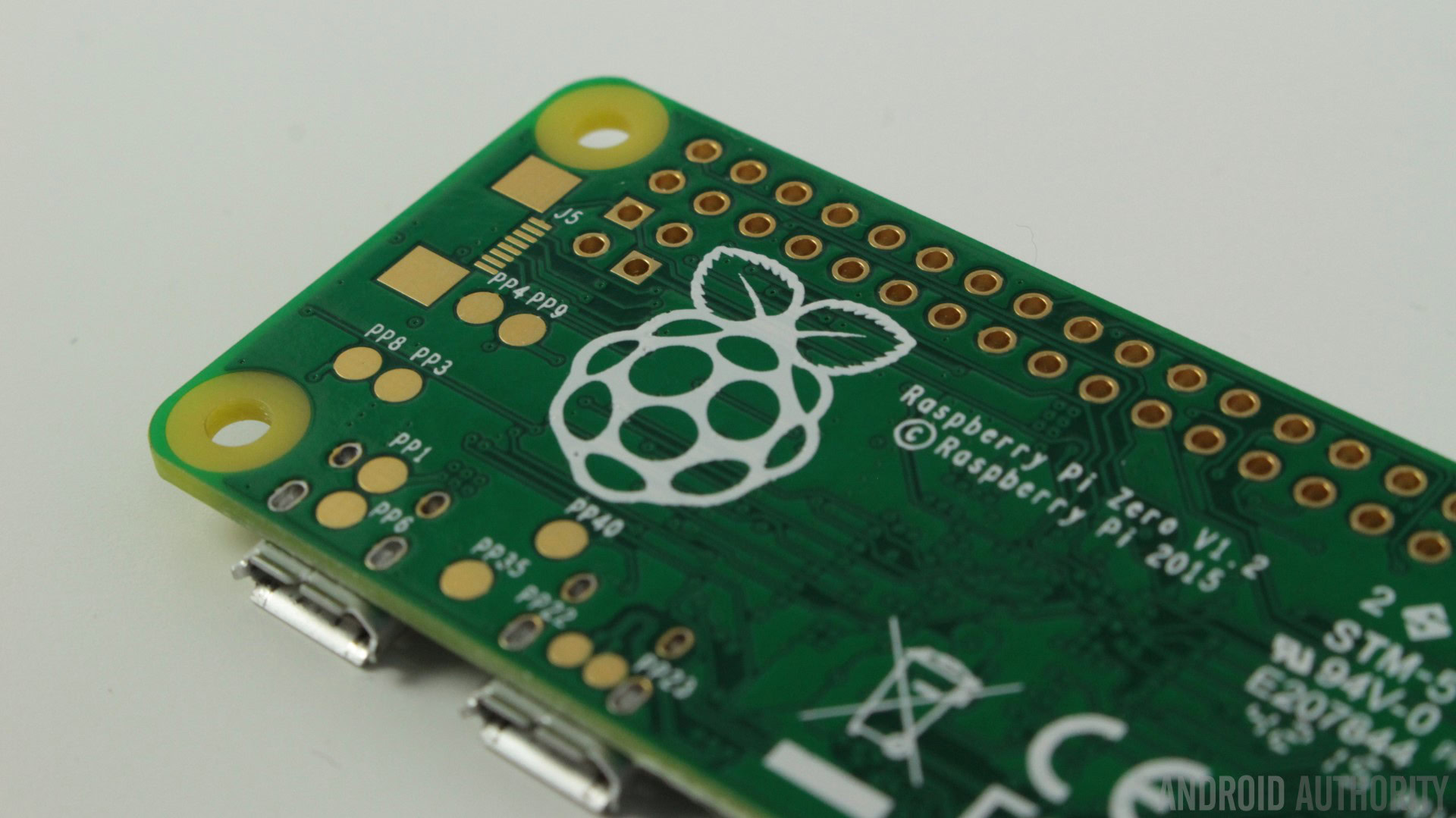Affiliate links on Android Authority may earn us a commission. Learn more.
How to build your own digital assistant with a Raspberry Pi
As voice recognition and natural language parsing have improved so has the availability of digital personal assistants, from Bixby to Alexa or Cortana to Google Assistant, all the major tech companies are continuing to develop digital assistants. Recently Google released its Assistant API for the Raspberry Pi. This means that makers, hobbyists and educationalists can now build the Google Assistant into project using the Pi.
Following the API release I started looking into building a kind of Amazon Echo or Google Home clone using the Raspberry Pi. Fortunately for me after a few days of pondering Google and the Raspberry Pi Foundation released the “Voice Kit” with a special bit of hardware called the Voice HAT (basically a speaker driver and microphone), plus some great software to built exactly that, a Google Home clone.
However, getting hold of the Voice Kit has been impossible. It was supplied on the cover of MagPi, the official Raspberry Pi magazine, and was sold out in hours. I hunted online and even asked one of my Android Authority colleagues (thanks Rob) to go out onto the streets of London to find a copy, but to no avail.
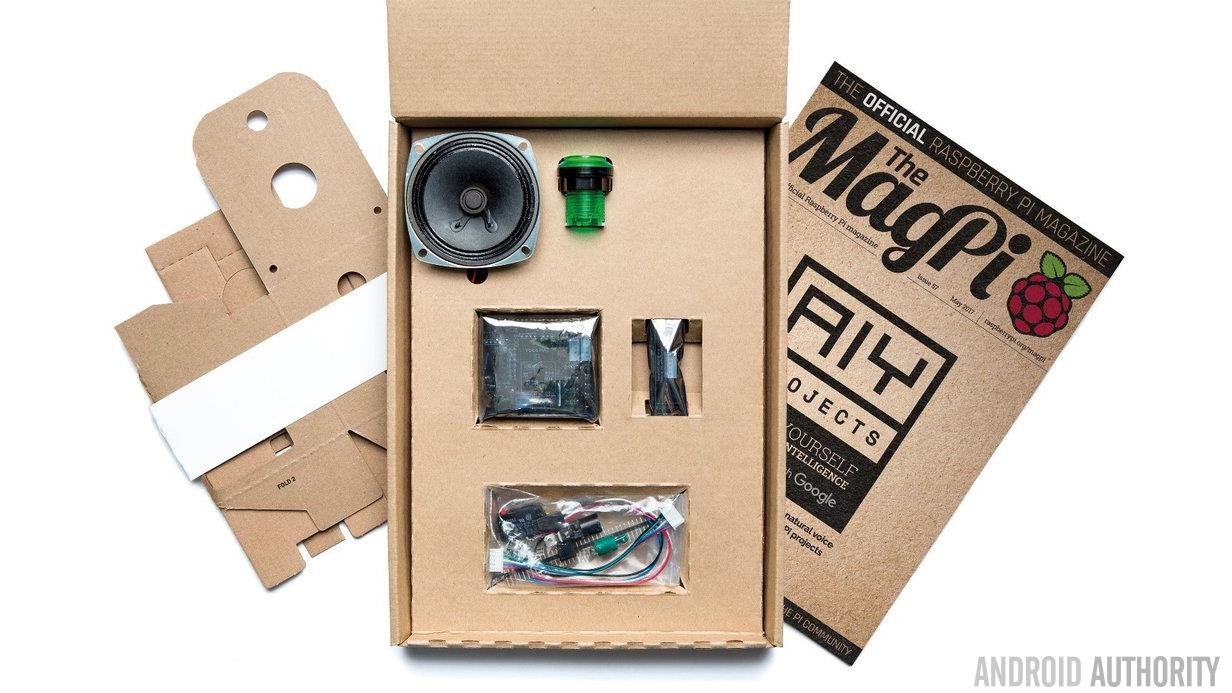
Thankfully all of the instructions for assembling the Voice Kit are online along with the software. So I decided to see how difficult it would be to get the Voice Kit up and running without the Voice HAT. The good news is that is isn’t that hard!
What you need
To build your own digital assistant you will need:
- A Raspberry Pi 3 (along with all the normal bits and pieces like a microSD card, a mouse, keyboard etc)
- A speaker with a 3.5 mm connector
- A USB microphone
- A simple switch and cables that can be connected to the GPIO pins of the Raspberry Pi
The basics
In a nutshell what we are going to do is take the Voice Kit software and modify it to work with the Pi’s internal sound card and a USB microphone. We are then going to make a switch (for activating the voice input) and put it all together in a cardboard box!
The first thing to do is download the Voice Kit microSD card image for the Raspberry Pi. You can download it directly from Google’s AIY Project site. Once the .img.xz file has been downloaded you need to write it to the microSD card using a card writing utility. The Etcher.io tool is a good choice for this as it is available for Windows, macOS and Linux. You don’t need to uncompress the image file, Etcher will take care of that for you.
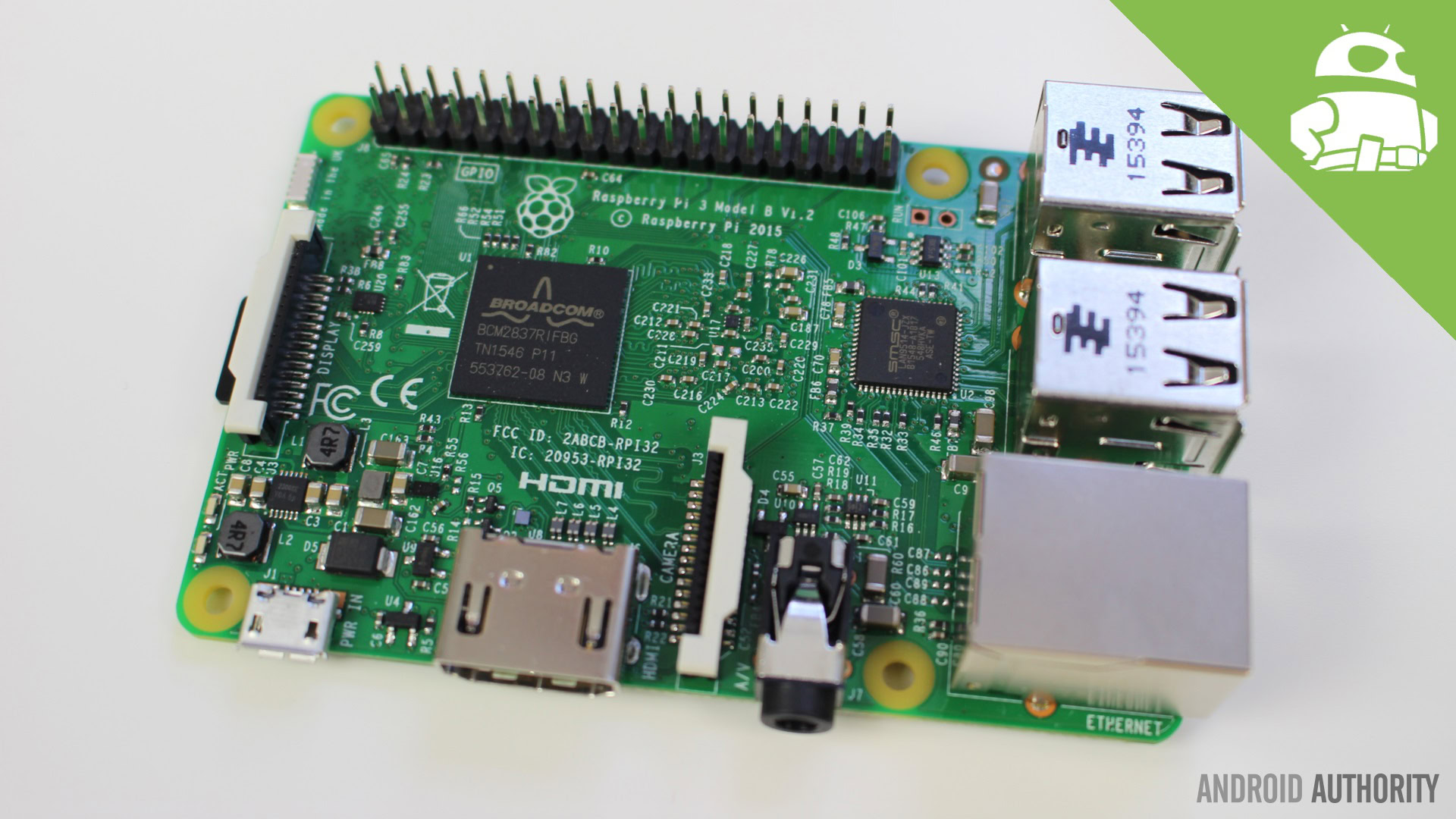
When the microSD card is ready then you need to connect your Raspberry Pi 3 to a TV/monitor and hook up a mouse and keyboard. Once set up then boot your Raspberry Pi with the Voice Kit microSD card.
After booting you will see the standard Pixel desktop, however the background has been changed to feature the AIY Projects logo. There are a number of tasks that need doing and then you need to reboot.
- Click on the Raspberry symbol at the top left of the display. Move to Preferences and then click on Raspberry Pi Configuration. In the program go to “Interfaces” and enable SSH. Press OK.
- Click on the Wi-Fi symbol at the top right of the display (near the clock) and then click on your Wi-Fi network. Enter the passphrase as appropriate. If you want to set a fixed IP address then right-click on the same Wi-Fi symbol and click on Wireless & Wired Network Settings. In the program pick your network card (wlan0 for the wireless interface) from the drop down menu and then fill in the desired IP address and router etc.
- Double click on the “Start dev terminal” icon on the desktop. In the terminal window type sudo leafpad /boot/config.txt and remove the # in front the the line dtparam=audio=on and insert a # in front of the two lines below it. Save the file and exit from leafpad.
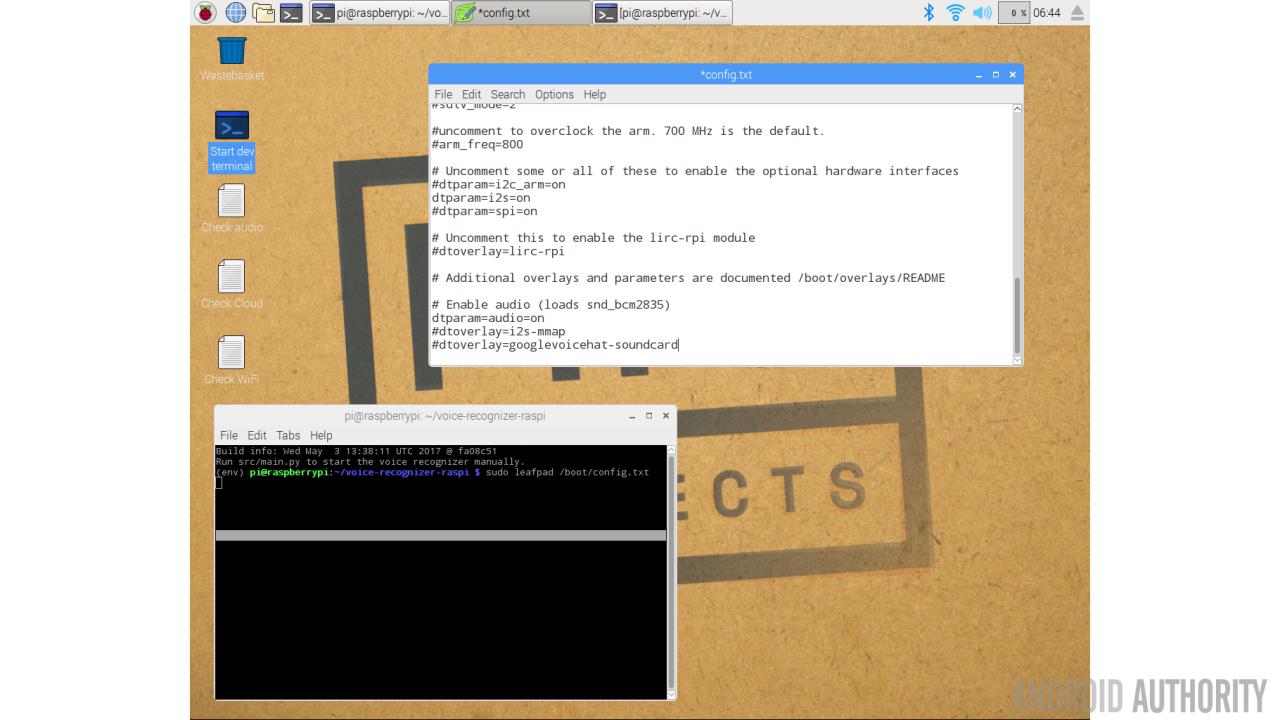
From step 3 above the last few lines of /boot/config.txt should look like this:
# Enable audio (loads snd_bcm2835)
dtparam=audio=on
#dtoverlay=i2s-mmap
#dtoverlay=googlevoicehat-soundcardAudio
The next step is to get the audio working. You are going to need a speaker with a 3.5 mm connector and a USB microphone. I didn’t have a dedicated USB microphone at hand so I plugged in a spare webcam that I had and the Pi was able to use the microphone from the webcam as a standalone mic! If you need a USB microphone then try this one. Plug in the speaker into the 3.5 mm jack on the board and connect the USB microphone to one of the USB ports.
In the terminal type:
sudo leafpad /etc/asound.confDelete all the contents of the file and replace it with:
pcm.!default {
type asym
capture.pcm "mic"
playback.pcm "speaker"
}
pcm.mic {
type plug
slave {
pcm "hw:1,0"
}
}
pcm.speaker {
type plug
slave {
pcm "hw:0,0"
}
}Save the file and exit from leafpad. The asounf.conf file tells the Pi about it sound hardware. As you can see there is a section for “mic” and another for “speaker”. The default values should be OK (but see below for troubleshooting).
Now it is time to reboot. Click on the Raspberry symbol (top left) and click on Shutdown… followed by Reboot.
When your Pi has rebooted it is time to run Google’s test scripts to make sure that everything is working.
Double click on the “Start dev terminal” icon again and type: leafpad /home/pi/voice-recognizer-raspi/checkpoints/check_audio.py
Near the top of the file change the line VOICEHAT_ID = ‘googlevoicehat’ to VOICEHAT_ID = ‘bcm2835’ and save and exit.
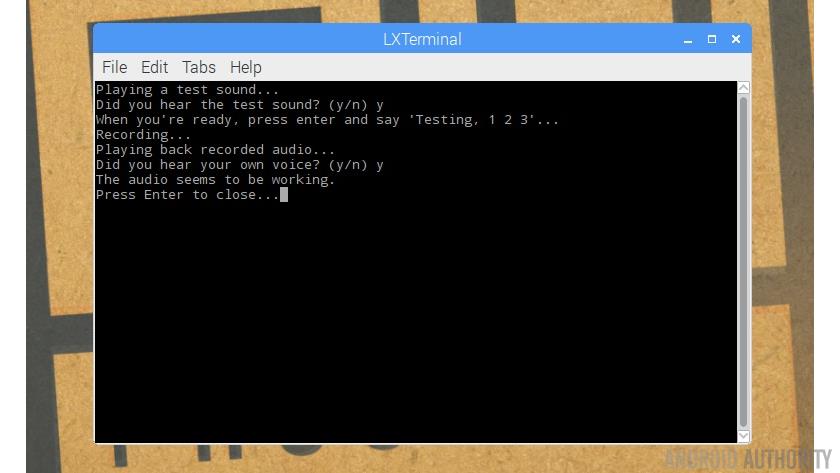
On the desktop there are three files for checking your configuration, double click on “Check audio” and follow the on screen prompts. If you can hear the sound being played and you are able to record your voice then you have the audio working.
If it doesn’t work then double check all the settings and read the Configure and Test the Audio page from Google’s Assistant documentation for more help and tips. In particular check out the section on using the “aplay -l” and “arecord -l” commands to check that your audio hardware is visible to the Pi.
The cloud
In order for the Google Assistant to work your Pi needs to be configured to work with Google’s cloud services. Full details of how you do this can be found on the Voice Kit website, but here is a quick summary:
- On the Raspberry Pi open up an internet browser and go to the Cloud Console.
- Create a new project
- In the Cloud Console, enable the “Google Assistant API”.
- In the Cloud Console, create an OAuth 2.0 client by going to API Manager > Credentials
- Click Create credentials and select OAuth client ID. Note that if this is your first time creating a client ID, you’ll need to configure your consent screen by clicking Configure consent screen. You’ll need to name your app (this name will appear in the authorization step).
- In the Credentials list, find your new credentials and click the download icon on the right.
- Find the JSON file you just downloaded (client_secrets_XXXX.json) and rename it to assistant.json. Then move it to /home/pi/assistant.json
- In the dev terminal type: systemctl stop voice-recognizer
- Go to the Activity Controls panel and switch on the following: Web and app activity, Location history, Device information, Voice and audio activity
The switch
If you have the full Voice Kit from Google/MagPi then it comes with a big arcade switch that is used to activate the voice recognition. Since I don’t have the Voice Kit I decided to use my own switch. For simplicity I am using a breadboard and a simple push button switch:
The circuit for the switch is as follows:
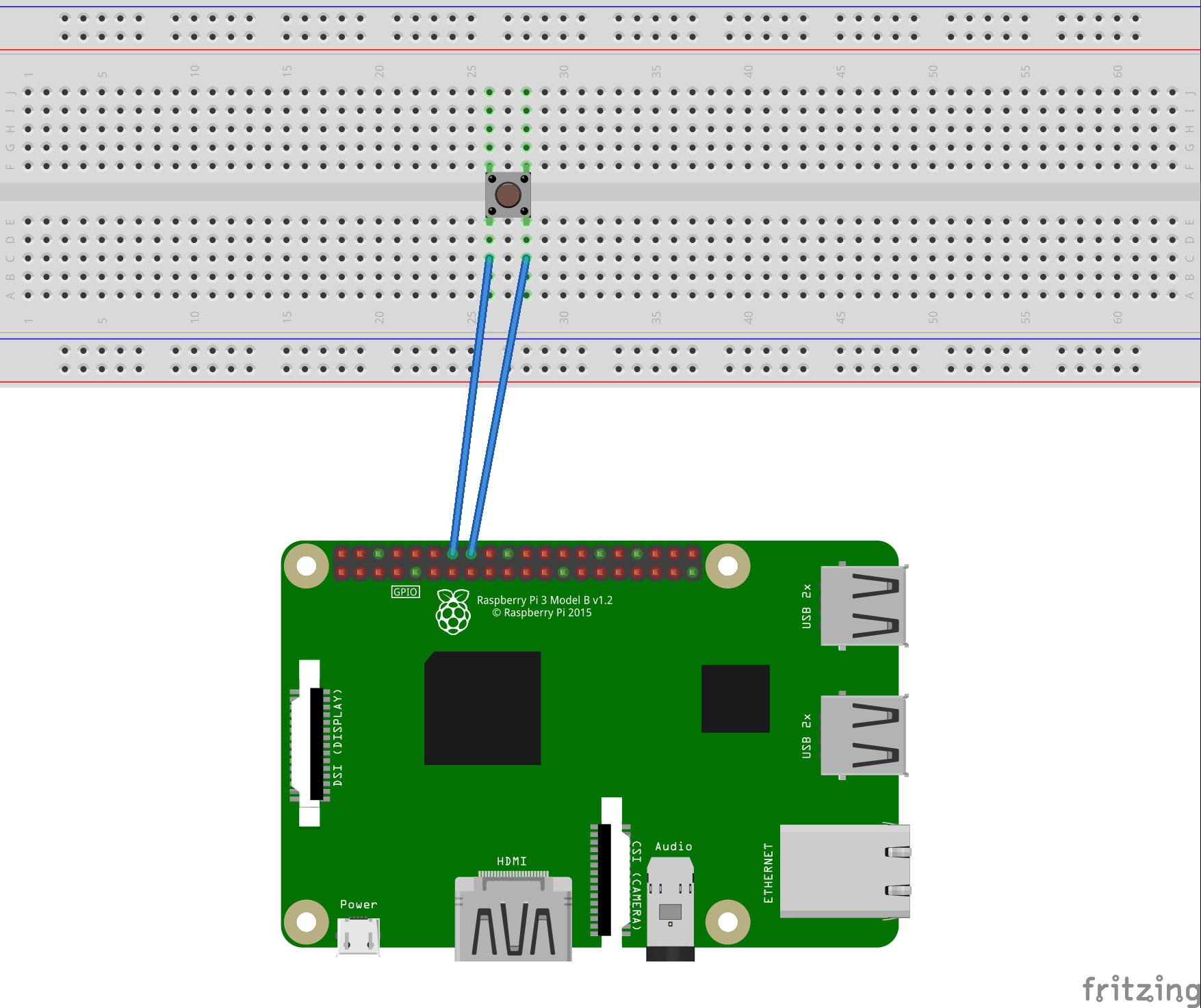
Once you have your circuit built you need to connect one side of the switch to GPIO 23 and the other side to ground, which is conveniently located on the next pin to the left of GPIO 23.
If you can’t build the switch then even just briefly shorting GPIO 23 and ground will have the same effect!
Test it
You should now have everything you need to test Google Assistant on your Raspberry Pi. All you need to do is run the following command from the dev terminal:
src/main.pyNote: The first time you run main.py a web browser will open and you will need to login to Google to give permission for the Raspberry Pi to access the Google Assistant API.
Press the button (and let go, there is no need to hold it) and say something to Google. Try:
- Who is the queen of England?
- What year was Henry the 8th born?
- When did the Mayflower leave Plymouth?
Making a case
The case that comes with the Voice Kit is simple in that it is made of cardboard, but yet sophisticated in that it has been designed specifically for the pieces supplied in the kit (like the speaker and the arcade button) and has an internal support structure.
For your home brew Google Assistant you will just need to use your imagination. Here is my best effort, but please remember that I was trained as a software engineer, not a hardware guy!
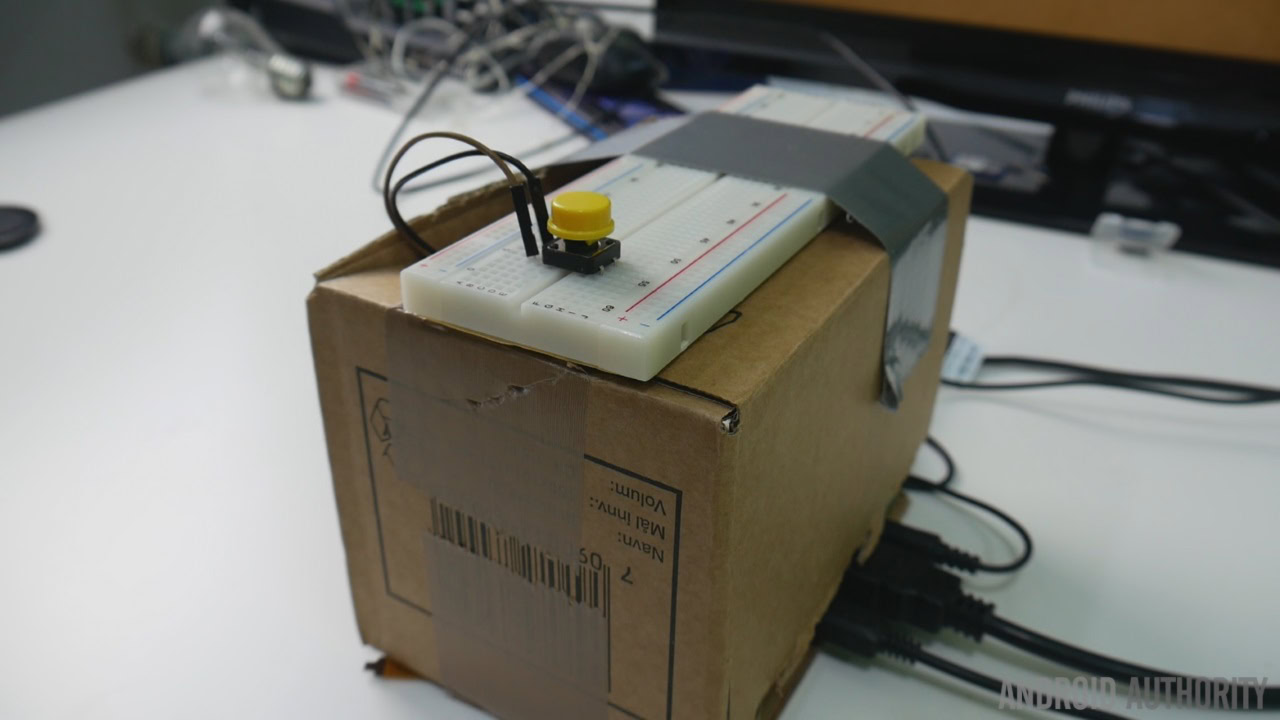
Wrap-up
Once you have the basic Raspberry Pi based Google Assistant running then the next step is to customize it yourself. Google has lots of documentation about how you can extend the assistant using Google’s cloud services. There is even an example where you can you turn on and off an LED using your own custom voice commands.
If you build anything cool with Google Assistant and the Raspberry Pi please let us know in the comments below. I am also keen to see the cases you make for your contraptions!
